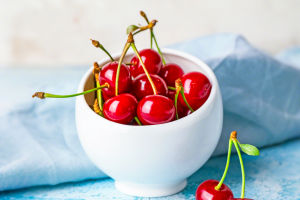Hey Lykkers! We all know that in many parts of the world, rice wrapped in leaves is a classic dish. It's the famous dumplings or "zongzi" that people love to eat during the Chinese Dragon Boat Festival.
But did you know this idea of wrapping rice and filling in leaves is popular all around the world? Different cultures have their own unique version of dumplings, each with its own twist and flavor. Let's dive into the exciting world of global dumplings and see how different countries prepare their own versions!
Hellenic Twist: Greek Dolmadakia
First up, we have Greece! Unlike the traditional zongzi that uses bamboo leaves, the Greeks use grape leaves for their version of a rice-wrapped treat called Dolmadakia. The leaves are tender and have a slight tangy flavor, and they are so thin that you can actually eat them with the rice. No need to peel them away like we do with zongzi.
The filling for Dolmadakia is simple yet full of flavor. It typically includes olive oil, fresh herbs like dill, pine nuts, and onions. Some versions also include meat, such as lamb. These little parcels are then wrapped up and steamed to perfection, giving them that aromatic grape leaf fragrance. Dolmadakia is usually served with a squeeze of fresh lemon juice, which brightens up the flavors. It's a light and refreshing dish that's perfect for a Mediterranean meal!
Middle Eastern Delight: Dolmeh
Next, we travel to the Middle East for another variation called Dolmeh. While it shares similarities with Dolmadakia, Dolmeh is usually a bit heartier and more flavorful. The grape leaves here are packed with a filling of spiced rice, herbs, and either lamb. The meat is often sautéed first, making the dish even richer.
Once wrapped, the Dolmeh is steamed just like the Greek version, allowing the flavor of the leaves to infuse into the rice and meat. Dolmeh is often served with a side of yogurt or yogurt-based sauce, adding a creamy tang to balance the spiciness. And just like the Greeks, Middle Eastern people always add a squeeze of fresh lemon on top before digging in.
Mexican Tamales: A Corn Leaf Wrap
Moving across the globe to Mexico, we find their version of a rice-wrapped dish: tamales. While tamales don't traditionally use rice, they share a similar concept in that they are also wrapped in leaves. Instead of grape leaves, tamales are wrapped in corn or banana leaves, giving them a distinct flavor.
The filling of tamales can vary greatly, but a typical one might include seasoned meats, chilies, corn dough (masa), and sometimes a little bit of cheese. The real kicker is the special sauce called Mole, which is a rich mix of chili and chocolate. It's spicy, savory, and a little sweet, making it a delicious addition to tamales. Making tamales is a family affair in Mexico, where the whole family gathers for a Tamalada—an event where everyone pitches in to make tamales for the upcoming celebrations.
Peruvian Juanes: A Tropical Delight
In Peru, near the Amazon jungle, there's a unique version of a rice wrap called Juanes. Juanes are typically filled with chicken, rice, and a bit of local spice. The Peruvian twist comes from the use of banana leaves and the special seasoning with chili and lime juice.
What sets Juanes apart is the addition of Cocona, a tangy fruit from the Amazon. Cocona adds a bold and unique sourness to the dish, making it stand out from other types of rice wraps. It's a must-try for anyone looking to explore tropical flavors!
Japanese Rice Wraps: Mochi-Inspired
Japan has a long history with rice wraps, but their versions differ quite a bit from our familiar zongzi. Japanese rice wraps, like the famous "kuzumochi," use rice flour rather than whole rice. These treats often have a chewy, mochi-like filling that is sweetened with syrup.
Japanese rice wraps are commonly wrapped in leaves such as bamboo or even reed, giving them a fragrant aroma. One of the most famous variations is called "Gosho-zushi," a type of sticky rice wrapped in various herbs and leaves, creating a subtle blend of flavors. Some of them even include a sweet filling like red bean paste, making them more of a dessert than a savory dish.
Filipino Suman Malagkit: A Sweet and Savory Treat
Last but not least, let's talk about the Philippines and their version of rice wraps called Suman Malagkit. Unlike most of the other versions we've seen, Filipino Suman is shaped into long, slender parcels that are wrapped in banana leaves. The rice is cooked in coconut milk, giving it a rich, creamy texture. The result is a soft, sweet, and savory dish that's perfect for a snack or dessert.
Suman can be eaten on its own, but many Filipinos enjoy it with a drizzle of caramelized coconut syrup. It's a comforting, tropical dish that's perfect for those with a sweet tooth.
The Universal Love for Rice Wraps
As we've seen, rice-wrapped dishes exist all over the world, and each country has its own special take. From Greece's Dolmadakia to Mexico's tamales and the Philippines' Suman Malagkit, these global dumplings share the common theme of rice and leaves, but with unique fillings, seasonings, and cooking methods. It's amazing how this simple concept transcends cultures and brings people together to enjoy delicious meals.
Lykkers, next time you're in the mood for something new, why not try one of these global dumplings? Whether you're in the mood for something savory or sweet, you'll find a version that suits your taste. Enjoy exploring these diverse flavors!


